01:11
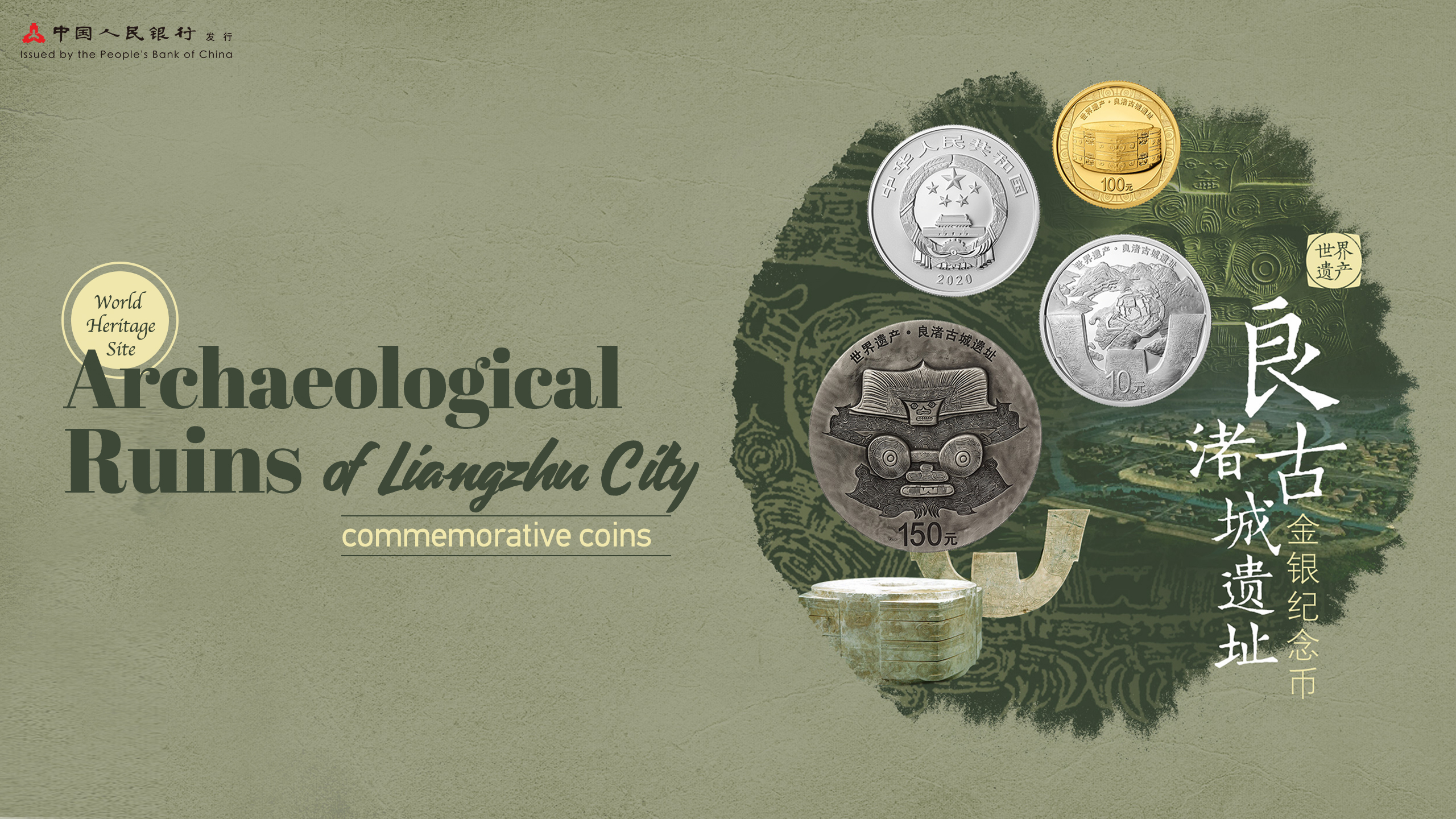
Talk about a gift with sentimental and material value!
Chinese bank authorities are celebrating a 5,300-year-old archaeological site in the eastern city of Hangzhou with special coins and releasing them on the first anniversary of the park's addition to the UNESCO World Heritage list.
The Archaeological Ruins of Liangzhu City in Zhejiang Province was built between 3300 B.C. and 2300 B.C. and is a testimony of an early organized state featuring an agrarian economy centered on rice cultivation and social status hierarchy.
The new set includes one gold and two silver coins, which are all legal tender, according to the People's Bank of China, the country's central bank. The tradition of issuing commemorative coins to celebrate World Heritage sites across the country began in 2003.
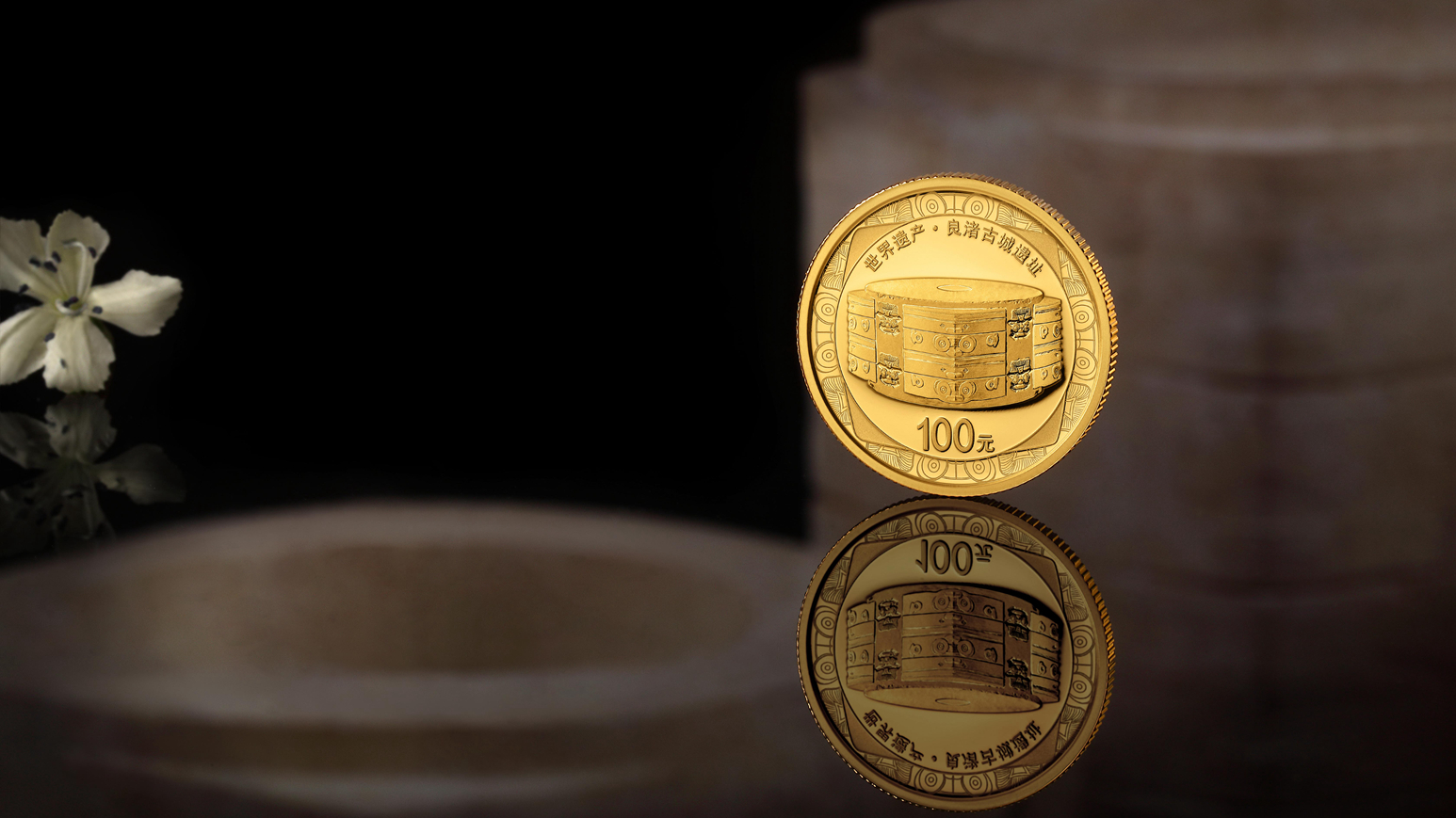
The gold commemorative coin, which is 22 mm in diameter, contains eight grams of pure gold and has a face value of 100 yuan. /Photo via chngc.net
The gold commemorative coin, which is 22 mm in diameter, contains eight grams of pure gold and has a face value of 100 yuan. /Photo via chngc.net

The silver coin of 150 yuan was carved with the typical "deity and animal mask pattern" that appears on Liangzhu's cultural relics. /Photo via chngc.net
The silver coin of 150 yuan was carved with the typical "deity and animal mask pattern" that appears on Liangzhu's cultural relics. /Photo via chngc.net
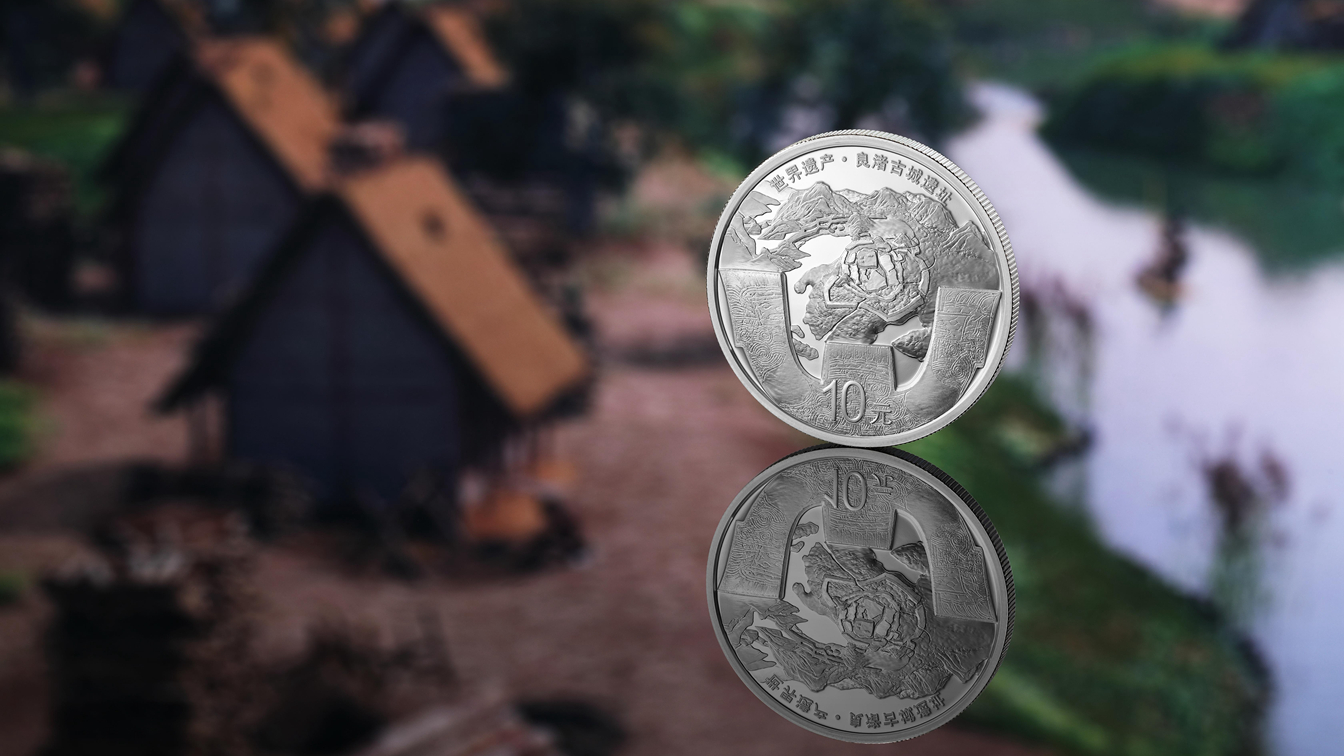
The silver coin, with a diameter of 40 mm, contains 30 grams of silver and has a denomination of 10 yuan. /Photo via chngc.net
The silver coin, with a diameter of 40 mm, contains 30 grams of silver and has a denomination of 10 yuan. /Photo via chngc.net
All coins feature the national emblem on the obverse side, while the reverse is inscribed with the Chinese characters for "World Heritage" and "Archaeological Ruins of Liangzhu City."
The gold commemorative coin, which is 22 mm in diameter, contains eight grams of pure gold and has a face value of 100 yuan (about 14 U.S. dollars) with Jade Cong – the most representative cultural artifact unearthed in Liangzhu Ancient City – and its unique decorative patterns shown on the back side.
With a diameter of 90 mm and 500 grams of silver, one of the two silver coins has a denomination of 150 yuan and was carved with the typical "deity and animal mask pattern," which appears on many of Liangzhu's cultural relics.
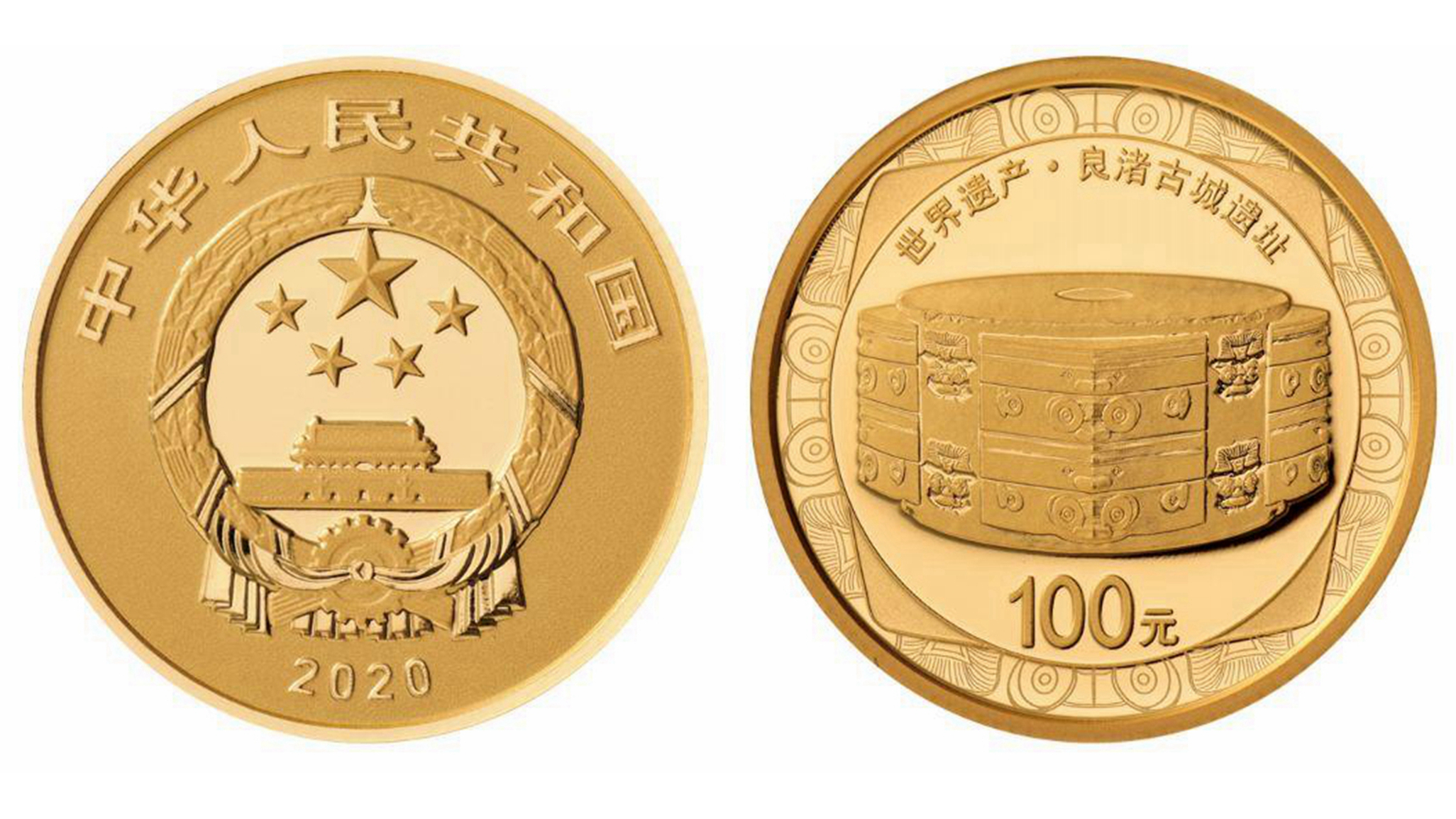
The obverse and reverse sides of the gold coin. /Photo via chngc.net
The obverse and reverse sides of the gold coin. /Photo via chngc.net

The obverse and reverse sides of the silver coin with a face value of 150 yuan. /Photo via chngc.net
The obverse and reverse sides of the silver coin with a face value of 150 yuan. /Photo via chngc.net
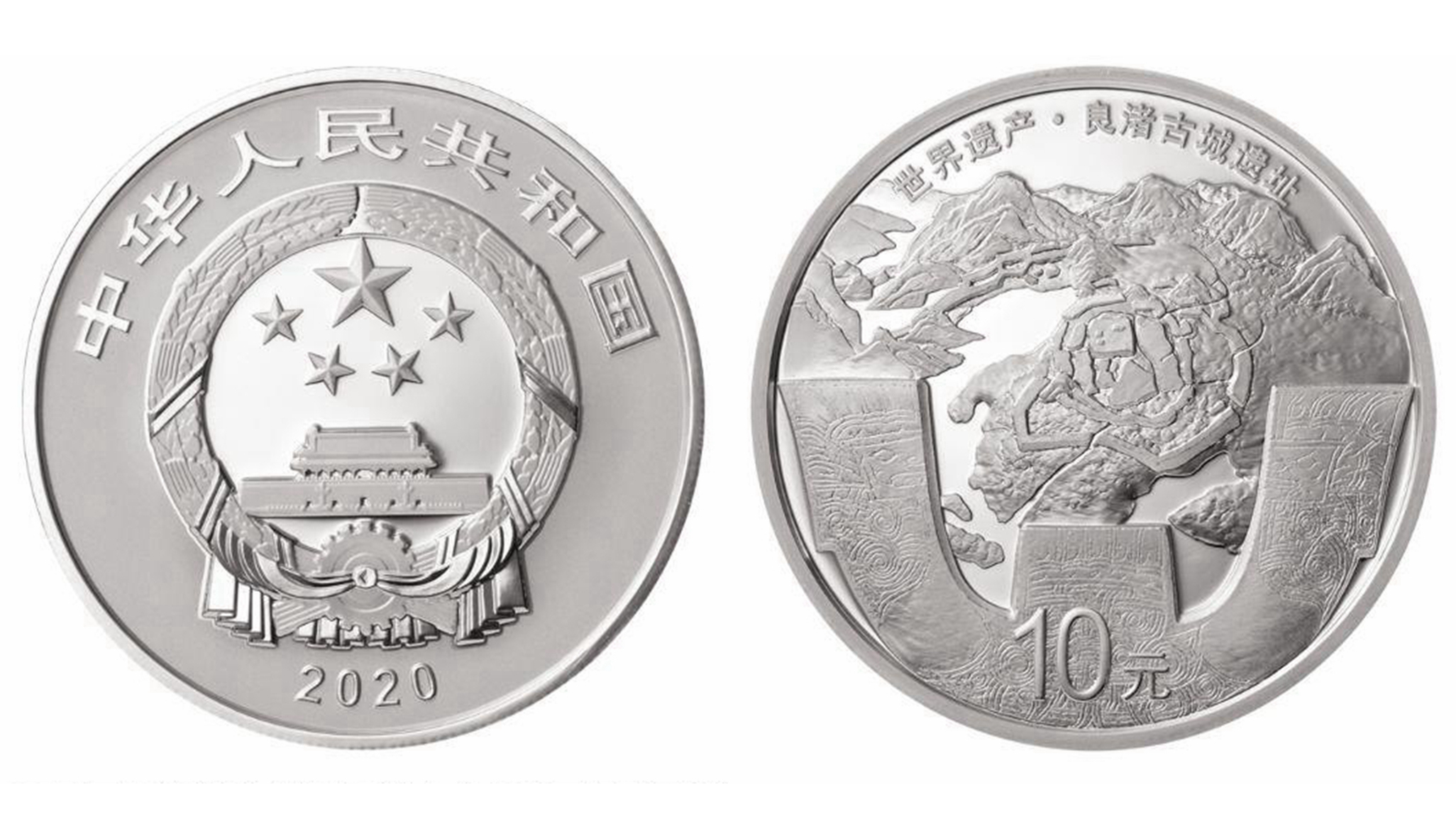
The obverse and reverse sides of the silver coin with a face value of 10 yuan. /Photo via chngc.net
The obverse and reverse sides of the silver coin with a face value of 10 yuan. /Photo via chngc.net
The other silver coin, with a diameter of 40 mm, contains 30 grams of silver and has a denomination of 10 yuan. Its reverse side presents the general view of the ancient city and its waterway entrances, as well as the precious jade trident discovered at the site.
China so far has issued eight sets of commemorative coins highlighting its World Heritage sites, including Mount Huangshan, Ancient Building Complex in the Wudang Mountains, West Lake Cultural Landscape of Hangzhou, Dazu Rock Carvings and Ancient City of Ping Yao.
Digital tools help safeguard World Heritage site
Monday marks exactly a year since Liangzhu Ancient City was named a World Heritage site.
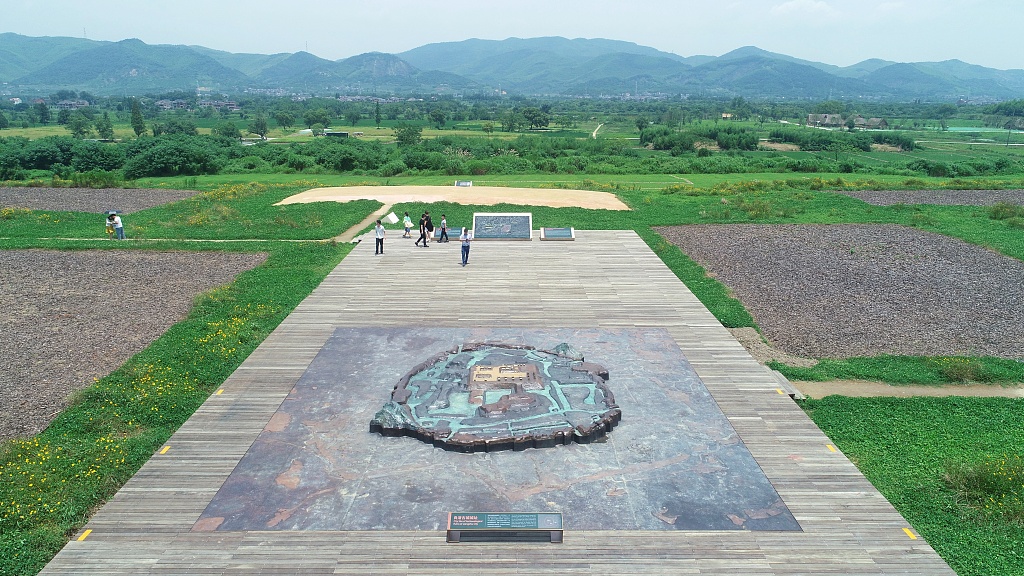
The Liangzhu City Ruins Park is located in Yuhang District of Hangzhou City, east China's Zhejiang Province. /VCG
The Liangzhu City Ruins Park is located in Yuhang District of Hangzhou City, east China's Zhejiang Province. /VCG
"The civilization of Liangzhu has been excavated and explored by four generations of archaeologists," said Liu Bin, director of Zhejiang Institute of Cultural Relics and Archaeology, ahead of the anniversary. "We currently know very little about it, and the archaeological work on it still needs to be deepened."
Liu added that the archaeological research at Liangzhu has been expanded since it was declared a World Heritage site, and the work will be "more scientific, more international, more theoretical and more public."
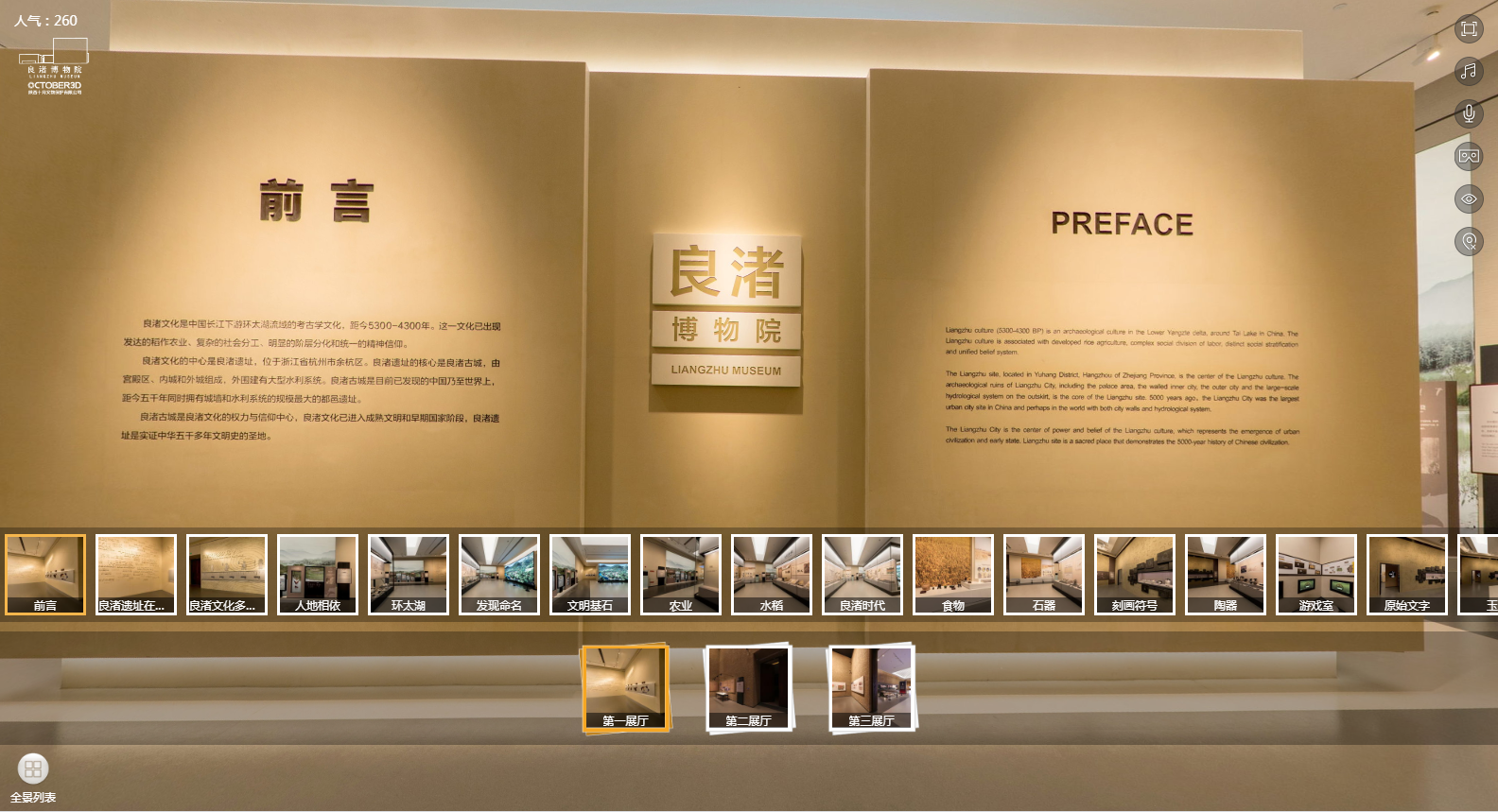
People can take a VR tour on the website of the Liangzhu Museum. /Screenshot via Liangzhu Museum
People can take a VR tour on the website of the Liangzhu Museum. /Screenshot via Liangzhu Museum
Preservation efforts have been digitized, according to Guo Qingling, director of the Monitoring and Management Center of the site, who added that much of the on-site monitoring has ceased to be manual.
"The center will become a 'digital cockpit' to safeguard the site," said Guo.

An aerial view of the Liangzhu Museum. /VCG
An aerial view of the Liangzhu Museum. /VCG
The Liangzhu City Ruins Park, which opened its doors to the public on July 7 last year, is now covered with 5G signal, while the Liangzhu Museum offers immersive and interactive experiences.
The museum launched an online exhibition themed "Explore the world in Liangzhu" on International Museum Day, on May 18, attracting nearly 900,000 views.
(Cover image designed by Jia Jieqiong; Video edited by Hong Yaobin)